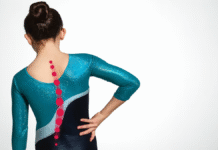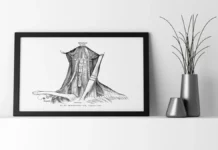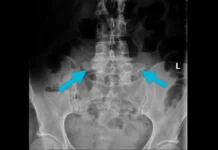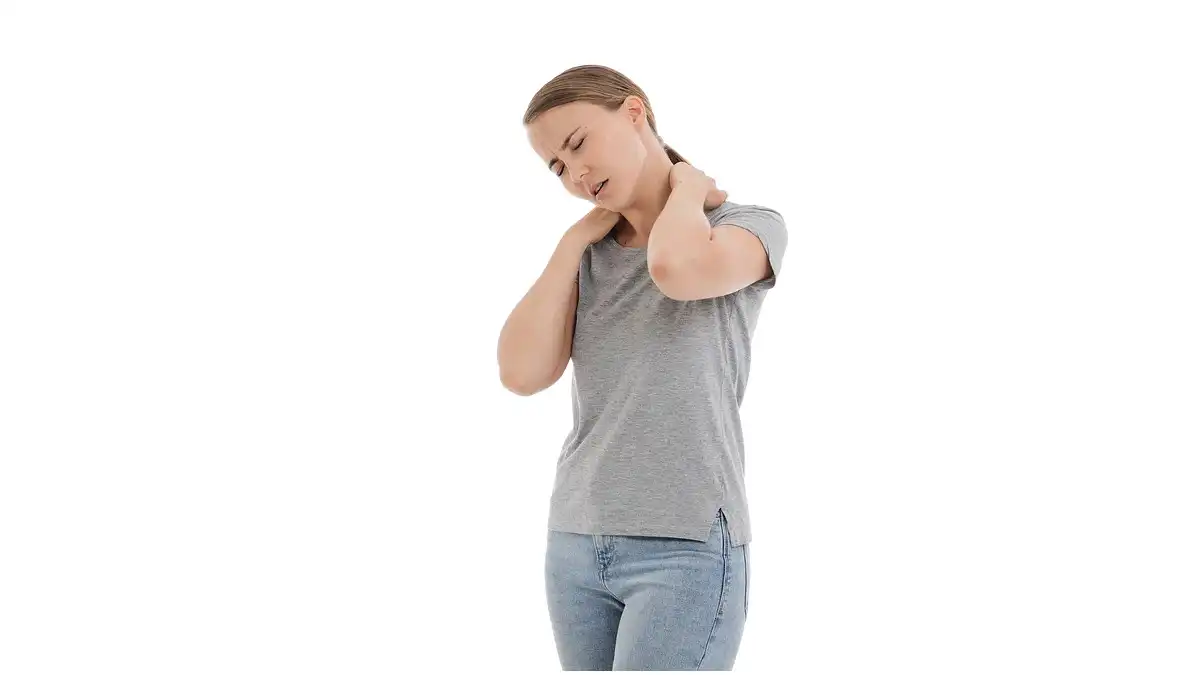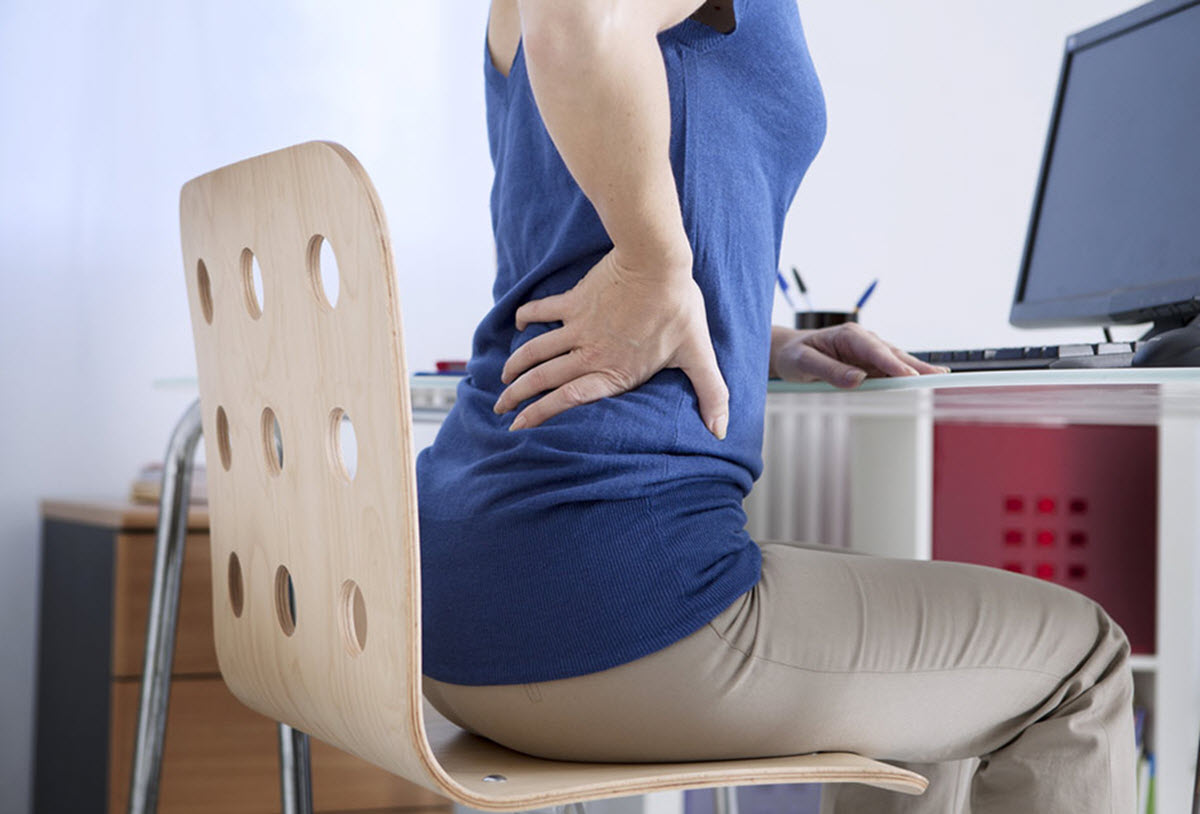Introduction
Definition of the dorsocervical fat pad
Dorsocervical fat pad, often referred to by the colloquial term “buffalo hump,” is characterized by abnormal fat deposits in the posterior region of the neck, just above the shoulder blades. This accumulation of fatty tissue can be due to a variety of causes, including hormonal imbalances, long-term use of corticosteroids, or metabolic problems such as obesity. Dorsocervical fat pad is often a visible sign of an underlying condition that requires medical attention.
Importance of understanding this condition
Understanding the dorsocervical fat pad is crucial for several reasons:
- Early Diagnosis: A thorough understanding of this condition allows for early detection and diagnosis of potentially serious underlying conditions, such as Cushing’s syndrome or other hormonal disorders.
- Appropriate Treatment: By identifying the underlying causes, healthcare professionals can provide appropriate treatments to reduce the fat pad and improve the patient’s quality of life.
- Prevention of Complications: Proper management of the dorsocervical fat pad can prevent additional complications, such as neck pain, postural problems, or movement limitations.
- Psychological Impact: Dorsocervical fat pad can also have psychological repercussions, affecting self-esteem and perception of body image. Better understanding and effective communication around this condition can help reduce the negative psychological impact on patients.

Causes of Dorsocervical Fat Pad
Hormonal factors
Hormonal imbalances play a major role in the development of the dorsocervical fat pad. Some of the most common hormonal conditions associated with this fat accumulation include:
- Cushing’s Syndrome: This condition is caused by excessive production of cortisol by the adrenal glands. Cortisol, a stress hormone, when present in high amounts can cause a redistribution of body fat, particularly in the dorsocervical region.
- Hypothyroidism: An underactive thyroid gland can also lead to fat accumulation in various parts of the body, including the dorsocervical area.
Prolonged use of corticosteroids
Corticosteroids are powerful medications often prescribed to treat chronic inflammatory diseases, severe allergies, or autoimmune diseases. However, prolonged use can cause significant side effects, including:
- Fat Redistribution: One of the most notable consequences of long-term corticosteroid use is the redistribution of body fat, which may manifest as a dorsocervical fat pad.
- Metabolic reactions: Corticosteroids may impair carbohydrate and lipid metabolism, contributing to abnormal fat accumulation.
Obesity and other metabolic factors
Obesity is a significant risk factor for the development of dorsocervical fat pad. In addition, other metabolic factors may also contribute to this condition:
- Body Fat Accumulation: Excess weight and obesity lead to accumulation of fat in various parts of the body, including the dorsocervical region. Obese individuals are more likely to develop a fat pad due to the overall distribution of body fat.
- Metabolic syndrome: This condition, characterized by a combination of diabetes, hypertension, and obesity, may increase the risk of developing a dorsocervical fat pad. The associated metabolic disorders contribute to localized fat accumulation.
In summary, dorsocervical fat pad can result from a variety of factors, including hormonal imbalances, prolonged corticosteroid use, and metabolic conditions such as obesity. Understanding these causes allows for more effective and targeted management for patients suffering from this condition.
Symptoms and Diagnosis
Common associated symptoms
Dorsocervical fat pad can be accompanied by a variety of symptoms, some directly related to the presence of the fat mass, others to underlying conditions. Common symptoms include:
- Visible prominence: A noticeable accumulation of fat at the base of the neck, visible to the naked eye, often described as a lump or mass.
- Pain and discomfort: Fat mass can cause local pain, stiffness or discomfort in the dorsocervical region.
- Limitation of mobility: The presence of the fat pad can restrict movement of the neck and shoulders, impacting flexibility and posture.
- Fatigue and muscle weakness: In case of underlying conditions such as Cushing’s syndrome, patients may experience general fatigue and muscle weakness.
- Hormonal symptoms: If the fat pad is related to hormonal imbalances, other symptoms such as excessive weight gain, skin changes, or menstrual irregularities may be present.
Diagnostic procedures and medical examinations
To diagnose dorsocervical fat pad and its underlying causes, several steps and medical tests may be necessary:
- Physical exam: A doctor will perform a detailed physical exam, noting the presence and appearance of fat, as well as any associated symptoms.
- Medical History: A complete review of the patient’s medical history, including use of medications such as corticosteroids, and past or present hormonal symptoms.
- Blood tests: Blood tests may be done to measure hormone levels, including cortisol and thyroid. These tests help identify hormonal imbalances such as Cushing’s syndrome or hypothyroidism.
- Medical imaging: Imaging tests such as MRI (magnetic resonance imaging) or CT scan may be used to visualize fat mass and rule out other structural abnormalities.
- Biopsy: In some cases, a biopsy of the fat mass may be performed to rule out more serious conditions, such as lipomas or other types of tumors.
- Endocrine Evaluation: If hormonal imbalances are suspected, a consultation with an endocrinologist may be necessary for further evaluation and specific testing.
Health Implications
Potential complications
Dorsocervical fat pad can lead to several potential complications, especially if not treated properly. Some of the main complications include:
- Chronic pain: Fat mass can cause persistent pain in the neck and shoulder area, exacerbated by muscle tension and postural problems.
- Postural Issues: Extra weight and altered fat distribution can affect posture, leading to spinal misalignments and muscle tension.
- Limitation of mobility: The presence of the fat pad can restrict movement of the neck and shoulders, making some daily activities difficult.
- Dermatological complications: The skin covering the fatty mass may become irritated, red or develop skin infections due to constant friction.
- Increased risk of cardiovascular disease: Underlying conditions, such as Cushing’s syndrome or obesity, are often associated with an increased risk of cardiovascular disease, including hypertension, coronary heart disease, and type 2 diabetes.
Impact on quality of life
The presence of a dorsocervical fat pad can have a significant impact on patients’ quality of life. The following aspects illustrate how this condition can affect various aspects of daily life:
- Body Image and Self-Esteem: Dorsocervical fat pad can affect physical appearance, leading to decreased self-esteem and body image issues. Patients may feel embarrassment or social discomfort due to their appearance.
- Reduced mobility: Movement limitations can make everyday activities, such as turning your head, lifting your arms, or carrying objects, more difficult and painful.
- Pain and discomfort: Chronic pain and discomfort associated with fat mass can reduce patients’ ability to participate in physical activities, contributing to an overall decrease in quality of life.
- Emotional and psychological stress: Complications related to physical appearance and functional limitations can lead to emotional stress, anxiety, and depression.
- Limited social interaction: Patients may avoid social interactions or situations where their condition is visible, leading to social isolation and reduced opportunities for social support.
The Dorsocervical Fat Pad: Is it Reversible?
The question of dorsocervical fat pad reversibility depends on several factors, including the underlying cause of the condition and the promptness of treatment. Here are some key things to consider:
- Treating underlying causes: If the dorsocervical fat pad is caused by a hormonal imbalance, such as Cushing’s syndrome, treating the underlying condition can result in a significant reduction in fat mass. For example, in Cushing’s syndrome, normalizing cortisol levels can allow for a more balanced redistribution of body fat.
- Lifestyle changes: Lifestyle changes, such as eating a balanced diet, exercising regularly, and managing your weight, can help reduce fat accumulation in the dorsocervical region. Losing weight overall can often decrease the size of the fat pad.
- Discontinuation of corticosteroids: For patients whose fat pad is related to long-term use of corticosteroids, reduction or discontinuation of these medications, under the supervision of a physician, may promote a reduction in fat mass. However, this should be done with caution to avoid complications related to abrupt discontinuation of corticosteroids.
- Medical and surgical treatments: In some cases, additional medical treatments may be necessary. Options may include medications to regulate hormones or surgical procedures such as liposuction to remove excess fat. These approaches are usually considered when noninvasive methods have failed to provide significant improvement.
- Holistic Approach: A comprehensive, individualized approach that considers both medical and lifestyle changes is often most effective. Collaboration with healthcare professionals, such as endocrinologists, nutritionists, and physical therapists, can provide the best results for dorsocervical fat pad reduction and management.
Why is there a deposit specifically at this location? The role of physiological and mechanical factors
The role of physiological and mechanical factors
The presence of a dorsocervical fat pad raises the intriguing question of why this fat deposit forms specifically in this area of the body. Several physiological and mechanical factors may contribute to this specific location:
- Body Fat Distribution: The human body tends to store fat differently depending on the individual. Certain areas, such as the dorsocervical region, may be more susceptible to fat accumulation due to genetic and hormonal factors.
- Mechanical support: The dorsocervical region supports a significant portion of the weight of the head and neck. Variations in posture, repetitive movements, and muscular imbalances can influence the distribution and accumulation of fat in this area.
- Hormonal response: Hormones, such as cortisol and thyroid hormones, play a crucial role in body fat metabolism and distribution. Hormonal imbalances, such as those seen in Cushing’s syndrome, can lead to abnormal fat accumulation in specific areas such as the dorsocervical region.
- Environmental impact: Environmental factors, such as chronic stress, dietary habits, and physical activity level, can also influence body fat distribution. These factors can contribute to increased fat accumulation in areas such as the neck and shoulders.
Treatment Options
To treat dorsocervical fat pad, several approaches can be considered, depending on the severity of the condition and the underlying causes. Here are the main treatment options:
Lifestyle and Diet Changes
Changes in lifestyle and dietary habits can play a crucial role in managing the dorsocervical fat pad:
- Regular physical exercise: Physical activity helps burn fat and improve body composition. Specific exercises to strengthen the back and shoulder muscles can also help reduce fat in the dorsocervical region.
- Balanced Diet: Eating a healthy diet rich in fruits, vegetables, and lean proteins can promote overall weight loss and reduce fat accumulation in the neck and shoulders.
- Stress Management: Reducing stress can help normalize hormone levels and prevent cortisol-related fat accumulation, especially in the dorsocervical region.
Medical and pharmacological treatments
In some cases, medical and pharmacological treatments may be necessary to treat the dorsocervical fat pad:
- Hormone therapy: If the condition is due to hormonal imbalances such as in Cushing’s syndrome, hormone treatments may be prescribed to normalize cortisol levels and reduce fat accumulation.
- Weight management medications: Medications may be used under medical supervision to aid in weight loss and reduction of body fat, including in the dorsocervical region.
Osteopathic treatment
- Osteopathic Approach: Osteopathic techniques can be beneficial in improving posture, mobility and circulation in the dorsocervical region. An osteopath can use gentle manipulations to reduce muscle tension and facilitate the harmonious distribution of fatty tissue.
Surgical interventions
As a last resort, when other methods have not been effective, surgical interventions may be considered:
- Liposuction: This surgical procedure involves suctioning out excess fat from the dorsocervical region. It is often used when the fat is localized and resistant to lifestyle changes.
- Plastic surgery: In some cases, plastic surgery may be recommended to remove the dorsocervical fat pad, especially if it is accompanied by loose skin or other cosmetic abnormalities.
Prevention and Long Term Management
To prevent the appearance of dorsocervical fat pad and manage this condition long-term, here are some helpful tips and strategies:
Tips to prevent the appearance
- Maintain a healthy body weight: Maintaining a healthy body weight through a balanced diet and regular physical activity can help prevent fat accumulation in the dorsocervical region.
- Avoid long-term corticosteroids: When possible, limit long-term use of corticosteroids, which may contribute to abnormal redistribution of body fat.
- Stress Management: Practicing stress management techniques such as meditation, yoga, or therapy can help maintain balanced hormone levels, reducing the risk of developing a cortisol-related dorsocervical fat pad.
Long-term management strategies
- Medical monitoring: Consult a healthcare professional regularly to monitor any changes in the dorsocervical region and assess potential risks related to metabolic and hormonal health.
- Maintain good posture: Adopting and maintaining good posture can reduce pressure on the dorsocervical region and prevent fat accumulation due to muscular and postural imbalances.
- Specific exercises: Incorporating specific exercises to strengthen the muscles of the back, shoulders, and neck can improve muscle stability and reduce the risk of developing a fat pad.
- Ongoing Osteopathic Approach: Regular sessions with an osteopath can help maintain mobility, circulation and structural balance in the dorsocervical region, preventing long-term complications.
Exercise and stretching
To treat or relieve a buffalo hump, it is recommended to consult a health professional, such as a doctor, physiotherapist or osteopath. However, here are some exercises and stretches that may be suggested as part of a management program:
Muscle strengthening exercises
- Strengthening the neck muscles:
- Gently tilt your head forward, then return it to the neutral position. Repeat.
- Tilt your head sideways to one side, then the other. Repeat.
- Strengthening the upper back muscles:
- Perform shoulder raises gently, keeping your shoulders relaxed.
- Perform backward shoulder rotations to strengthen the trapezius muscles.
- Overall exercises to improve posture:
- Exercises such as yoga or Pilates can help strengthen core muscles and improve overall posture.
Stretching
- Neck stretch:
- Sit or stand with your back straight.
- Gently tilt your head to one side, trying to bring your ear closer to your shoulder.
- Hold the position for 15 to 30 seconds, feeling the stretch on the opposite side of the neck.
- Repeat on the other side.
- Trapezius stretch:
- Sit or stand with your back straight.
- Gently lower one shoulder down while tilting your head slightly to the opposite side.
- Use your free hand to apply gentle pressure to the side of your head, intensifying the trapezius stretch.
- Hold for 15-30 seconds and repeat on the other side.
- Neck extension:
- Sit or stand with your back straight.
- Place your hands behind your head and gently tilt your head back.
- Avoid straining and hold the position for 15 to 30 seconds, feeling the stretch in your neck and upper back area.
- Splenius muscle stretch:
- Sit or stand with your back straight.
- Gently turn your head to one side while tilting your chin slightly downward.
- Place your hand on the opposite side on top of your head to apply light pressure.
- Hold for 15-30 seconds and repeat on the other side.
- Shoulder stretch:
- Extend your right arm out in front of you.
- Use your left hand to grab your right elbow and bring your right arm across your chest.
- Hold the position for 15 to 30 seconds, feeling the stretch in your shoulder area.
- Repeat on the other side.
- Rhomboid muscle stretch:
- Sit or stand with your back straight.
- Place your hands behind your back and slowly lower them while spreading your shoulder blades.
- Hold the position for 15 to 30 seconds, feeling the stretch between your shoulder blades.
- Neck stretch:
- Gently tilt your head to one side, using your hand to apply light pressure.
- Tilt your head back, looking up at the ceiling.
- Upper Back Stretch:
- Sit or stand with your arms crossed in front of you.
- Round your back and stretch your shoulder blades.
- Overall stretch:
- Cat-Cow pose in yoga can help stretch and strengthen the back muscles.
Conclusion
In summary, dorsocervical fat pad is a condition characterized by the accumulation of fat in the neck and shoulder region, often influenced by hormonal, metabolic and environmental factors. This accumulation can lead to various symptoms and complications, affecting the quality of life of affected individuals.
To effectively treat dorsocervical fat pad, a multidisciplinary approach is recommended. This includes lifestyle modifications such as a balanced diet and regular exercise, medical treatments to manage hormonal imbalances, osteopathic interventions to improve mobility and posture, and surgical options in cases requiring more direct intervention.
To prevent the development of dorsocervical fat pad and ensure effective long-term management, it is essential to maintain a healthy body weight, avoid prolonged corticosteroid use when possible, and proactively manage stress. Regular follow-up with a healthcare professional is also crucial to monitor any changes in the condition and adjust the treatment plan as needed.
References
French Osteopathic Association (AFO) : This organization provides information on osteopathic approaches and their application in the treatment of musculoskeletal conditions.
PubMed : A medical research platform that aggregates scientific studies and articles on a variety of medical topics, including endocrine and metabolic disorders.
American Academy of Orthopaedic Surgeons (AAOS) : Professional resource providing information on musculoskeletal conditions and orthopaedic treatments.



